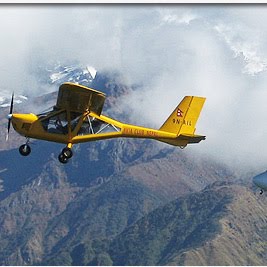
Perched on a hill at an altitude of 1,401m, Bhaktapur or Bhadgaon, literally the City of Devotees, is a major tourist attraction taking visitors back in time. Covering an area of 4 sq. miles, this city retains the charming paved roads, red brick houses and a way of life that goes back to medieval times. The extraordinary ‘Durbar Square’ with its celebrated Golden Gate and extraordinary Palace of Fifty-Five windows reflects the glory days of the Malla Dynasty when art and architecture thrived in the three cities of the valley. Situated 14km east of Kathmandu, this ancient city is also famous for pottery and woodcarving amply displayed on the squares and windows respectively.
Around Bhaktapur
Siddha Pokhari: For a small city, Bhaktapur has the largest number of public water tanks built within the city limits. Siddha Pokhu (Pokhari) is one of the largest tanks meant to supply drinking water to the people of Bhaktapur. Built in the 15th Century by King Yakshya Malla, this large rectangular tank is teeming with fish and is occasionally open to the public for fishing and boating.
Nyatapola: The unique temple of Bhaktapur, the Nyatapola literally means ‘Five storied’ and rises above the city as a remarkable landmark. It also has the distinction of having withstood the devastating earthquake of 1933. Dedicated to a tantric goddess, the steps leading up to the temple, is flanked by stone sculptures. At the base are two statues of Malla era wrestlers representing humans and in ascending order of power and strength, there are creatures each ten times more powerful than the preceding statue.
Batsala Temple: One of temples built out of stone is the Batsala Devi of Bhaktapur which has many intricate carvings. Beside it is the famous bronze bell, locally known as 'the bell of barking dogs' as its ringing was invariably accompanied by the howling of dogs in the vicinity. This large bell was put up by King Ranjit Malla in A. D. 1737 and its sounding announced the beginning and end of a daily curfew. Today, it is rung every morning when the priests worship Goddess Taleju.
Bhairavnath Temple: Dedicated to Kasi Bhairav, the three storied temple of Bhairavnath has only the head of Bhairav in the inner sanctum. Legend has it that Kasi Bhairav’s head was cut off by a tantric expert in order to keep him in Bhaktapur. Built in the pagoda style, it stands adjacent to the more famous five storied Nyatapola temple. Bhairav is the dangerous aspect of Shiva. Originally built by King Jagat Jyoti Malla, the temple was improved by King Bhupatindra Malla, a zealous lover of the arts.
Thimi: 10 km east of Kathmandu close to Bhaktapur, is the potter’s town of Thimi. Besides farming, most households here are engaged in pottery. This laid back town not only supplies Kathmandu its pottery but also its vegetables. The most important deity here is Goddess Balkumari. The charming medieval lifestyle of these farmers is a major tourist attraction.
Siddha Pokhari: For a small city, Bhaktapur has the largest number of public water tanks built within the city limits. Siddha Pokhu (Pokhari) is one of the largest tanks meant to supply drinking water to the people of Bhaktapur. Built in the 15th Century by King Yakshya Malla, this large rectangular tank is teeming with fish and is occasionally open to the public for fishing and boating.
Nyatapola: The unique temple of Bhaktapur, the Nyatapola literally means ‘Five storied’ and rises above the city as a remarkable landmark. It also has the distinction of having withstood the devastating earthquake of 1933. Dedicated to a tantric goddess, the steps leading up to the temple, is flanked by stone sculptures. At the base are two statues of Malla era wrestlers representing humans and in ascending order of power and strength, there are creatures each ten times more powerful than the preceding statue.
Batsala Temple: One of temples built out of stone is the Batsala Devi of Bhaktapur which has many intricate carvings. Beside it is the famous bronze bell, locally known as 'the bell of barking dogs' as its ringing was invariably accompanied by the howling of dogs in the vicinity. This large bell was put up by King Ranjit Malla in A. D. 1737 and its sounding announced the beginning and end of a daily curfew. Today, it is rung every morning when the priests worship Goddess Taleju.
Bhairavnath Temple: Dedicated to Kasi Bhairav, the three storied temple of Bhairavnath has only the head of Bhairav in the inner sanctum. Legend has it that Kasi Bhairav’s head was cut off by a tantric expert in order to keep him in Bhaktapur. Built in the pagoda style, it stands adjacent to the more famous five storied Nyatapola temple. Bhairav is the dangerous aspect of Shiva. Originally built by King Jagat Jyoti Malla, the temple was improved by King Bhupatindra Malla, a zealous lover of the arts.
Thimi: 10 km east of Kathmandu close to Bhaktapur, is the potter’s town of Thimi. Besides farming, most households here are engaged in pottery. This laid back town not only supplies Kathmandu its pottery but also its vegetables. The most important deity here is Goddess Balkumari. The charming medieval lifestyle of these farmers is a major tourist attraction.




No comments:
Post a Comment